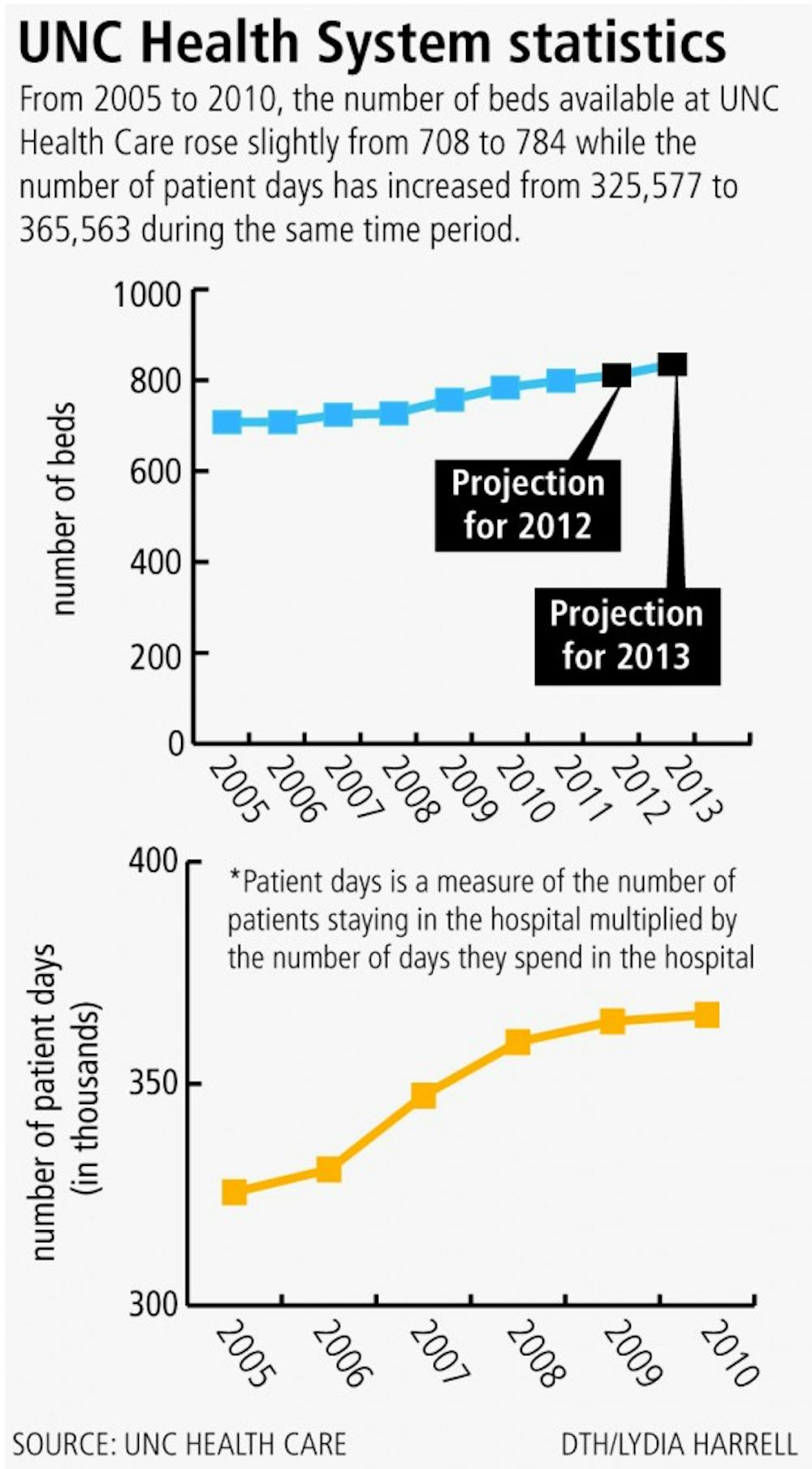“It costs money to move off-site, and then you have to renovate what you have on-site, so it’s a double-cost,” Lafrenaye said.
Melvin Hurston, UNC Health Care’s senior vice president of professional and support services, wrote in an email that the current economy has led to more bidding competition, lowering the price for construction.
UNC Health Care’s Hillsborough hospital and physician’s office building is the next large off-site project, slated to open by July 2015.
Funding for construction comes from the hospital’s budget for capital investment projects — projects that cost at least $5,000.
UNC Health Care has spent almost $1.1 billion on capital investment projects since 1990.
Privacy please
James said in an email that renovations and remodeling will increase the number of beds and convert semi-private rooms to private.
This could yield between 10 and 20 additional beds by 2012, she said. The organization plans to open a new inpatient unit in the Neurosciences Hospital that will add 24 beds in 2013. And opening the Hillsborough facility is slated to free up 68 licensed patient beds on UNC’s campus.
“Any patient coming in wants to be somewhere that’s nice and has space,” James said. “In any economy you have to continue to invest back into yourself to continue to improve.” Lula Daniel, patient flow coordinator for UNC Health Care, said the current focus of construction efforts is to create more private rooms in order to improve patient experience.
“When you’re sick, you need your own space — your own private space to heal and to be treated,” Daniel said.
Since 2004, UNC Health Care has expanded from 688 licensed patient beds — patient beds located in rooms with windows — to 799 beds. Of those 799 licensed beds, nearly 25 percent are located in semi-private rooms where two patients are allocated per room.
Shane Rogers, director of patient relations and interpreter services, said patient exit surveys indicate a preference for private rooms and concerns about lack of privacy, noise and cleanliness in two-person rooms.
To get the day's news and headlines in your inbox each morning, sign up for our email newsletters.
“We clean those rooms twice a day to make sure,” Rogers said. “It’s double the manpower.”
Impact of population growth
WakeMed Health and Hospitals expanded its Raleigh hospital location from 515 to 575 beds in 2010. Its Cary hospital grew from 114 to 156 beds in 2008.
The Raleigh location operates at more than 85 percent capacity on average while the Cary location operates at more than 75 percent.
Stan Taylor, vice president of corporate planning for WakeMed, said he thinks more patients come with a growing job market and an aging baby-boomer population.
“People over 65 utilize more health care resources … that’s the dynamic we have to deal with,” he said.
WakeMed is finalizing plans for a new women’s hospital — which would add 61 licensed beds — as well as trying to qualify for more beds through a state Certificate of Need.
Duke University Hospital, which has all private rooms, has also seen growth in patients and is planning to add a new wing, said Frank DeMarco, clinical operations director of its emergency department.
“We’re having the same problems that Carolina and Wake are having, and it’s a ripple effect on all parts of the hospital,” he said.
Contact the City Editor at city@dailytarheel.com.



